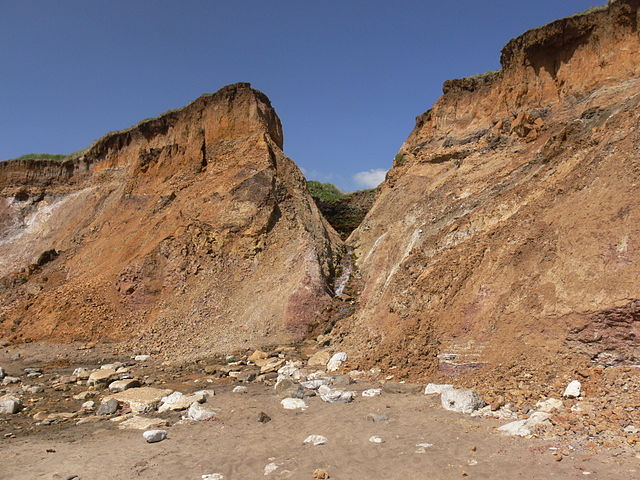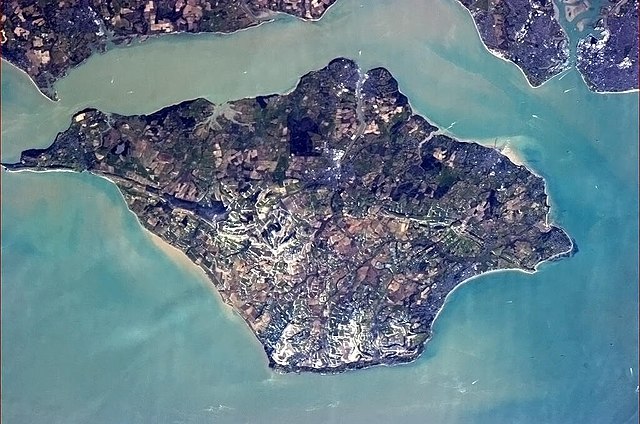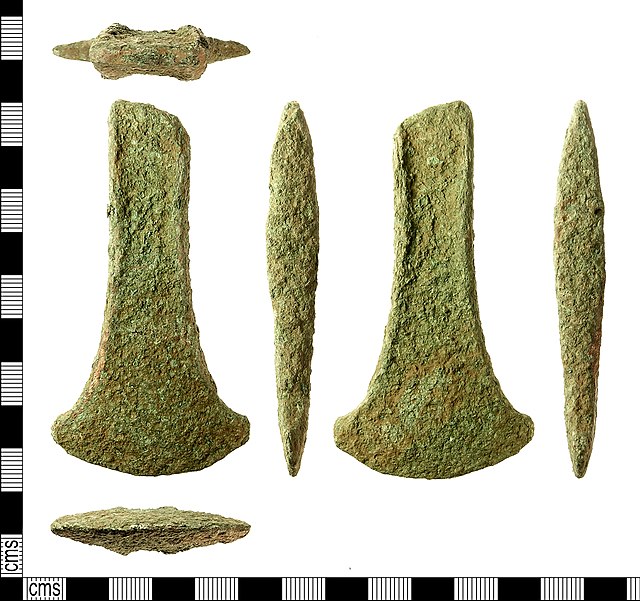A chine is a steep-sided coastal gorge where a river flows to the sea through, typically, soft eroding cliffs of sandstone or clays. The word is still in use in central Southern England—notably in East Devon, Dorset, Hampshire and the Isle of Wight—to describe such topographical features. The term 'bunny' is sometimes used to describe a chine in Hampshire. The term chine is also used in some Vancouver suburbs in Canada to describe similar features.
Chine forming on soft cliffs at Compton, Isle of Wight
Shanklin Chine, circa 1910.
Shepherd's Chine, Isle of Wight
The Isle of Wight is an island, English county and unitary authority in the English Channel, 2 to 5 miles off the coast of Hampshire, across the Solent. It is the largest and second-most populous island in England. Referred to as "The Island" by residents, the Isle of Wight has resorts that have been popular holiday destinations since Victorian times. It is known for its mild climate, coastal scenery, and verdant landscape of fields, downland, and chines. The island is historically part of Hampshire. The island is designated a UNESCO Biosphere Reserve.
An image of the Isle of Wight from the ISS
A flint hand axe from the Paleolithic, c. 500,000 BP, found on the island in 2010.
A Neolithic arrowhead from c. 2500 – c. 2100 BCE, found on the island in 2011
An early Bronze Age axehead from c. 2000 – c. 1700 BCE, found on the island in 2011







